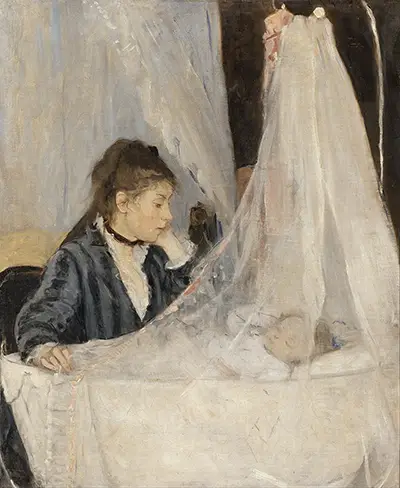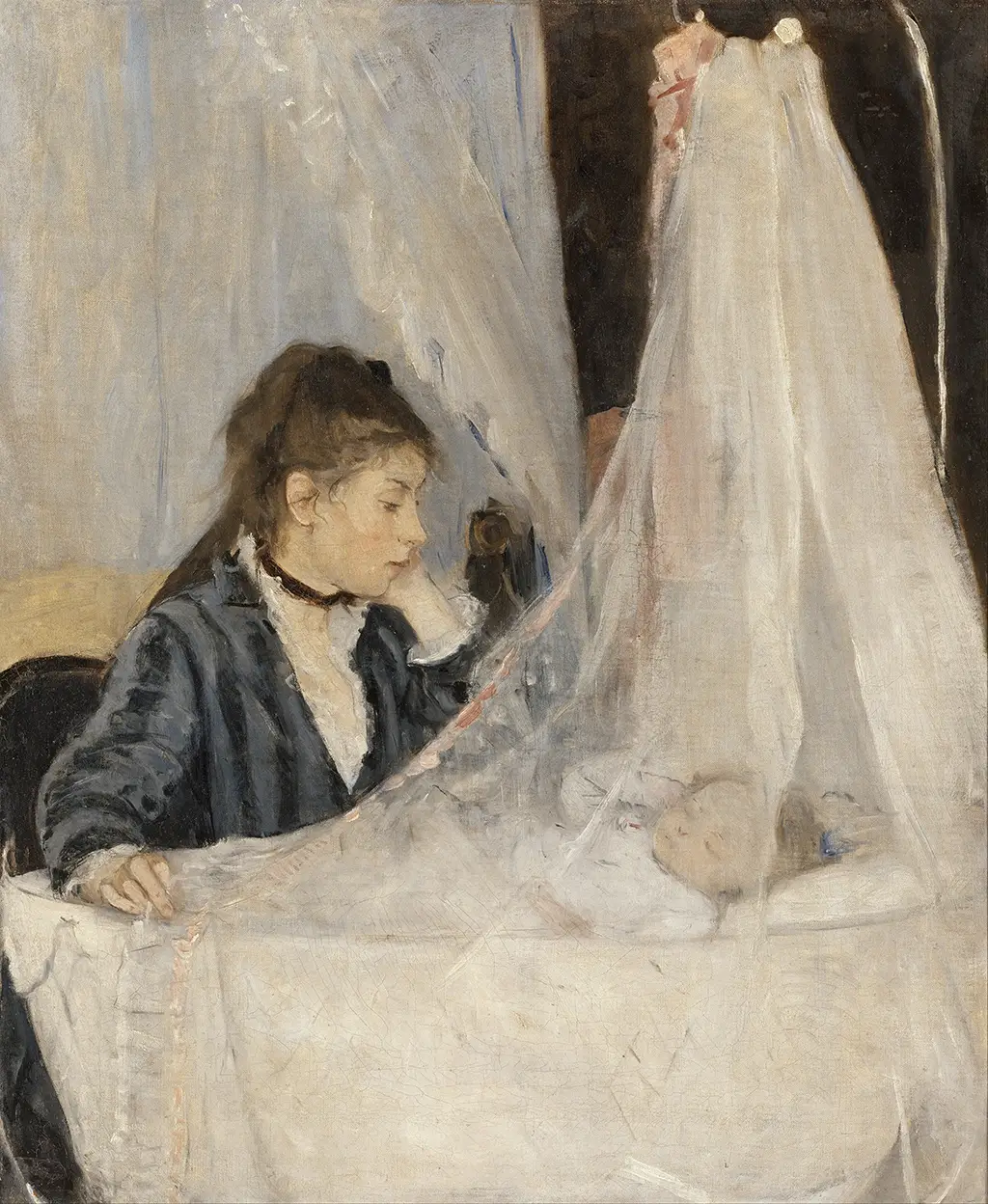The Cradle by Berthe Morisot dates from 1872 and beautifully combines the two themes of Impressionism and life from a female perspective in the 19th century. Morisot always offered a unique viewpoint within this movement.
The figures captured in the scene titled The Cradle are Morisot's sister - Edma with her daughter, Blanche. The motherhood vibe continued throught out the artist's career and offered a satisfying break from the endless landscape paintings found in the Impressionist movement (whilst fully accepting the beauty and innovation of their work in that genre). The European art scene was clearly in need of the influence and ideas of some female artists and this would come in the form of Morisot, Cassatt, Eva Gonzalès and Marie Bracquemond. In recent years there has been a growing exposure of their work as well as female painters in general.
This has proven a popular painting within Morisot's career, with a number of her followers appreciating the theme of motherhood as well as the relaxing atmosphere to this painting. It is frequently reproduced as an art print, as a result of this. The baby sleeps peacefully as Edma looks on, holding a pose which appears to be a combination of slight anxiety and tiredness, typical of a new mother. Most women were restricted in their roles in society and this led to much of their art being devoted to scenes such as these. The Cradle was features in the very first Impressionist exhibition but was not purchased, forcing the artist to keep it within her family from that point onwards.
The shape of a triangle is frequently used by artists to lay out compositions, going as far back as the Renaissance. In this scene we see the torso of Edma being the first triangle, with a second being the veil that covers the cradle. The consistency marries mother and child together, probably a conscious addition by the artist to give an impression of bonding. Edma herself was an artist of considerable note until deciding to devote her life to her family as the mother of several children - perhaps she still partially wished to return to art during this sitting as her facial expression is far from joyful. The Cradle can be found in the collection of the Musée d'Orsay in Paris, where you can also find other famous impressionist paintings. It measures 56 cm by 46 cm in line with the artist's normally fairly modest size of canvas.





